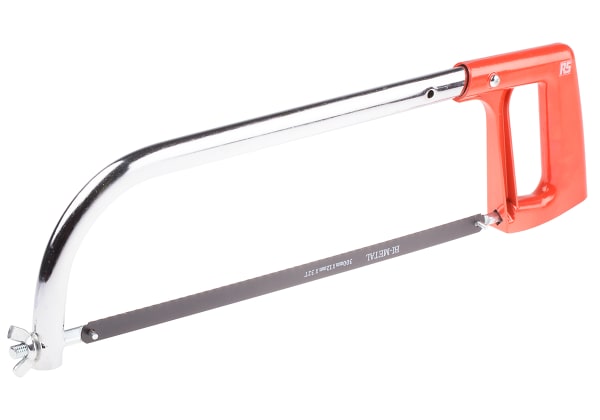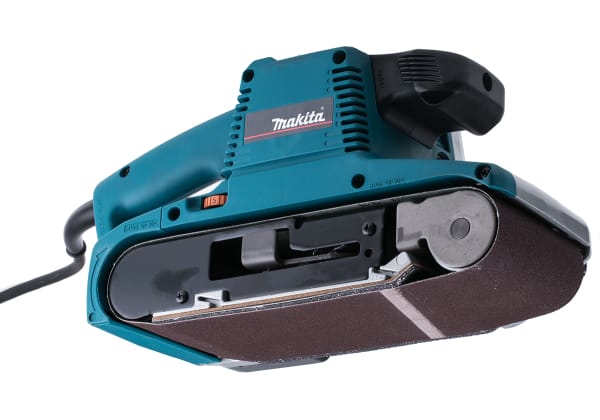- Published 9 Jul 2023
- Last Modified 29 Aug 2023
- 6 min
What is a Hand File Used for?
Discover the versatility of the hand file, a fundamental tool offering precise control in numerous industries. Gain insights into the different types, applications, and safe handling techniques.

Hand files are used extensively in various industries. These tools are employed in workshops and factories to smooth, shape, finish, and remove material from workpieces. This guide explores what a hand file is, the types available, its practical uses, and how to use it safely.
What is a Hand File?
A hand file is a hardened steel tool used for cutting and shaping materials like metal, wood, plastic, and more. Hand files are typically long, with a handle at one end and a pointed tip at the other. Their surfaces are covered with ridges or teeth, which cut when the file is moved over a surface.
Hand files offer a high degree of control and precision, making them essential in professions such as engineering, jewellery making, woodworking, and manufacturing. They are particularly useful for tasks requiring a fine finish or intricate detailing, where automated tools may not offer the required accuracy.
Types of Hand Files
Hand files come in various shapes and sizes, each designed for a specific purpose. Here are the most common types:
Flat Hand Files
This is the most common type of file. It has a flat surface with parallel edges, ideal for general-purpose filing. Its versatile shape makes it suitable for both concave and flat surfaces.
Round Hand Files
This file is round and tapers to a point. It's specifically designed for filing circular openings or concave surfaces.
Half-Round Files
These files have one flat and one rounded side, making them a versatile choice for working on both flat and curved surfaces.
Square Files
Square files have four equal sides and are excellent for enlarging square or rectangular openings and creating sharp corners.
Triangular Files
These files have a triangular cross-section and are primarily used for sharpening serrated edges and cleaning up angular corners.
Engineer's Files
These are used by engineers for a variety of purposes, such as deburring, smoothing edges, and removing small amounts of material. They are often double-cut for faster, coarser filing and have a tapered point for detailed work.
Needle Files
Needle files are miniature files designed for precision work. They come in a variety of shapes, including flat, round, half-round, and more. They're typically used by jewellers, model makers, and other professionals needing to perform delicate, detailed filing.
Hand File Sets
These are collections of several types of files. Hand file sets often include different shapes (like flat, round, square, half-round, and triangular files) in multiple sizes. These sets provide a comprehensive toolkit for a range of filing tasks.
What Does a Hand File Do?
Hand files are used to remove material from a workpiece. By running the file across the surface, it shaves off small amounts of material with each stroke. This is particularly useful for refining shapes, smoothing rough edges, or producing a particular finish on a workpiece.
A hand file tool is indispensable for professionals who require precise control over material removal, such as engineers creating prototypes or jewellers crafting intricate designs. It allows for the precise removal of material in small, controlled increments, which can be challenging with power tools.
How to Use a Hand File
Proper use of a hand file can not only ensure your safety but also make a significant difference to the quality of your work. Here are some tips:
- Always wear safety glasses when using a hand file to protect your eyes from flying particles
- Secure the workpiece in a vice or clamp before you start filing. This prevents the piece from moving and reduces the risk of injury
- Use the file in a push stroke, moving it away from your body. The cutting teeth on most files are designed to cut in this direction
- Maintain the correct angle for the type of filing you're doing. This might be straight across for flat filing, or at an angle for draw filing
- Clean the file regularly to prevent the teeth from becoming clogged with debris

Using Hand Files on Different Materials
Hand files are incredibly versatile tools, capable of shaping and smoothing a variety of materials. Understanding how to use a hand file with varied materials - such as metal or wood - can ensure a clean finish and prolong the life of your files.
Using Hand Files on Metal
When filing metal, it’s critical to choose the right file for the job. Metal files usually have a higher number of teeth per inch (TPI), which makes them ideal for this material. Here are some tips for using hand files on metal:
- Always file in one direction away from your body. Unlike sawing, filing is not a back-and-forth motion
- Use a file with a rough or coarse cut to quickly remove material. As you approach your final shape, switch to a finer-cut file to smooth the surface
- Apply a moderate amount of pressure on the forward stroke, and lift the file on the return to avoid blunting the file's teeth
Using Hand Files on Wood
Using a file on wood can be an effective way to shape and smooth this softer material. Here are some tips:
- Use a file specifically designed for wood, also known as a rasp or wood file. These files have fewer, larger teeth and wider gullets (spaces between teeth) to remove larger amounts of material
- Like metal, always file in one direction. This is particularly important with wood to avoid tearing the grain
- You can use files to refine the shape after rough cutting with a saw or to smooth out surfaces after using a plane
- To ensure a smooth surface, apply even pressure and make long, sweeping strokes
- Always file along the grain of the wood, never against it, to avoid a rough finish
By understanding these distinctions, you can ensure that your hand filing is effective and that your workpieces have the best possible finish, regardless of the material.
Summary
The hand file is an essential addition to any workshop, offering meticulous control over shaping and smoothing materials. Available in a range of types, including flat and round hand files, needle or engineer's files, or comprehensive hand file sets, they cater to a broad range of tasks.
Whether you're an engineer crafting precise components or a jeweller working on delicate pieces, a strong understanding of the hand file's functions, types, and safe usage is integral to achieving the finest results. Safety precautions such as securing the workpiece and wearing eye protection ensure the tool's longevity and its user's safety. This makes the hand file an invaluable addition to a professional's toolkit.


